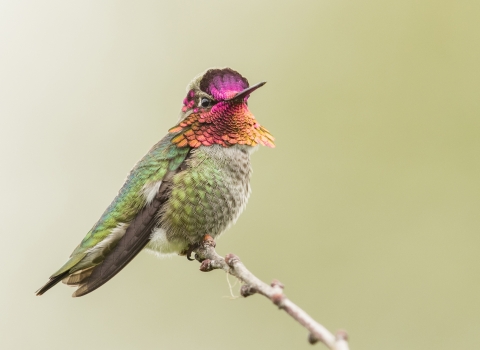The U.S. Fish and Wildlife Service has completed its initial review of a petition to list the dunes sagebrush sagebrush
The western United States’ sagebrush country encompasses over 175 million acres of public and private lands. The sagebrush landscape provides many benefits to our rural economies and communities, and it serves as crucial habitat for a diversity of wildlife, including the iconic greater sage-grouse and over 350 other species.
Learn more about sagebrush lizard under the Endangered Species Act (ESA). The Service has concluded that the petition presents substantial information indicating listing may be warranted. Accordingly, the Service will now begin an in-depth review of this species to determine whether it should be listed under the ESA.
The dunes sagebrush lizard is an insectivorous spiny lizard that only occurs in the oak sand dune systems of extreme southeast New Mexico and four counties in Texas. This lizard has the second smallest range of all lizards in the United States. The Service’s review of the petition indicates that listing the lizard may be warranted as a result of potential threats associated with sand mining, oil and gas development, and climate change climate change
Climate change includes both global warming driven by human-induced emissions of greenhouse gases and the resulting large-scale shifts in weather patterns. Though there have been previous periods of climatic change, since the mid-20th century humans have had an unprecedented impact on Earth's climate system and caused change on a global scale.
Learn more about climate change , combined with inadequate existing regulatory mechanisms to address these threats.
The ESA allows citizens to petition the U.S. Fish and Wildlife Service to add new species to the List of Endangered and Threatened Wildlife and Plants, remove species from the list, and to reclassify species already on the list.
A substantial 90-day finding represents one early step in a rigorous process by which the Service determines whether or not a species warrants listing under the ESA. The standard for a positive 90-day finding is relatively low, requiring only that the petitioner provide substantial information that listing may be warranted. The standard for a positive 12-month finding (the next step in the process) is much higher, involving an in-depth status review and analysis using the best available science and information. The public can play a role by sending scientific information on the species that will aid the Service in that endeavor.
The notice will be available on July 16, 2020 in the Federal Register online at https://www.regulations.gov/docket?D= FWS-R2-ES-2018-0093, and one day prior to that in the Reading Room at https://www.federalregister.gov/public-inspection on the 2020 Notices link under Endangered and Threatened Wildlife and Plants.
For more information on the ESA listing process, including 90-day findings and status reviews, please go to www.fws.gov/endangered/esa-library/pdf/listing.pdf.


